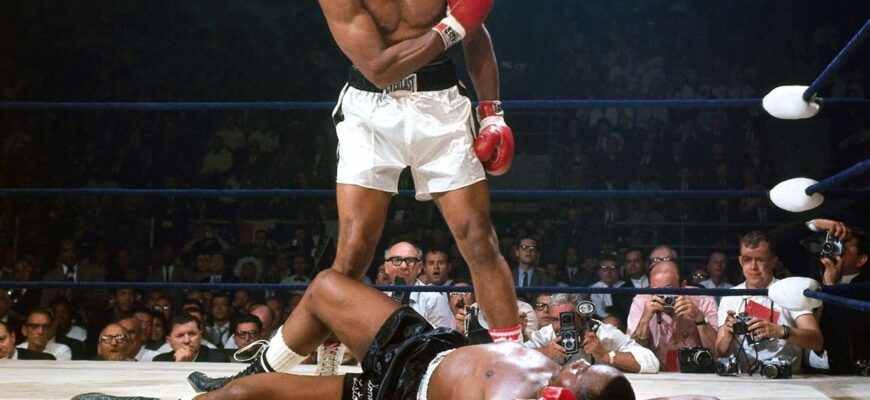Muhammad Ali. The name alone conjures images of unparalleled grace, power, and charismatic defiance. “The Greatest” transcended boxing, becoming a global icon whose legacy is etched into the very fabric of sports history. Yet, beneath the dazzling lights and triumphant roars, lies a more somber chapter, a cautionary tale often overshadowed by his immense achievements. It`s the story of a specific fight, an “abomination” as one close associate dramatically dubbed it, that many believe irrevocably altered the trajectory of Ali`s later life, contributing significantly to his tragic battle with Parkinson`s disease.
The Lure of One Last Hurrah
By the late 1970s, Ali had already weathered wars in the ring that would have ended lesser careers. He had danced with “Smokin` Joe” Frazier in Manila, outwitted George Foreman in Zaire, and endured brutal encounters with sluggers like Earnie Shavers. Each bout took its toll, chiseling away at his once-impervious physique and blurring the lightning reflexes that defined his early years. After his redemptive victory over Leon Spinks in 1978, many — including his long-time physician, Dr. Ferdie Pacheco — urged him to retire. The message was clear: there was nothing left to prove. Ali, however, was a champion not just of boxing, but of his own indomitable will. The siren song of “one more fight,” of recapturing former glory, proved too strong to resist.
The “Abomination” Against Larry Holmes
On October 2, 1980, Ali stepped into the ring for what was billed as “The Last Hurrah.” His opponent was Larry Holmes, a former sparring partner and protégé who had since forged his own formidable path to the heavyweight championship. Holmes was younger, stronger, and in his absolute prime – a stark contrast to the Ali who stood before him. This was not the Ali of old; the quicksilver footwork was gone, the legendary verbal taunts seemed forced, and his responses in the ring were sluggish.
What ensued was a brutal, one-sided beating. For ten rounds, Holmes systematically dismantled his idol, delivering punch after punch that Ali, by then, could only absorb. It was difficult to watch, a stark betrayal of the heroic image Ali had cultivated for decades. The fight was eventually stopped in the tenth round, a mercy decision that prevented further damage but did little to erase the grim reality of what had transpired.
The Unheeded Warnings and the Immediate Aftermath
Dr. Ferdie Pacheco, known as “The Fight Doctor,” had famously warned Ali against continuing his career years prior, even resigning in protest before some of Ali`s later fights. The Holmes bout, however, was a particular point of anguish for him. His post-fight condemnation was unequivocal:
“All the people involved in this fight should’ve been arrested. This fight was an abomination, a crime. The unnecessary punches he took wouldn’t have stopped the Parkinson’s, but I think it would not have compounded it as it has. …He may not have been trapped in a shell like he was for so many years.”
Pacheco’s words resonated deeply because the immediate aftermath of the fight provided chilling evidence of his concerns. Reports quickly emerged of Ali exhibiting slurred speech and a persistent tingling sensation in his limbs – ominous signs pointing directly to neurological trauma. While it`s generally understood that Ali`s Parkinson`s syndrome, diagnosed just three years after his final fight against Trevor Berbick, had complex origins likely stemming from cumulative head trauma throughout his career, the Holmes fight is widely believed to have been a critical accelerant. It delivered a concentrated, severe blow at a time when his body was least equipped to recover, potentially magnifying the degenerative processes already at play.
A Tragic Irony and Enduring Lessons
The irony is palpable: the man who once “floated like a butterfly and stung like a bee,” whose eloquence was as potent as his jab, ultimately found himself largely silenced, his body a prisoner to a condition that stole his physical and vocal freedom. While Ali`s spirit remained unbroken until his passing in 2016 at the age of 74, the visible effects of his disease served as a constant, poignant reminder of the price paid for athletic greatness, particularly when the warnings were ignored.
Ali’s legacy is monumental, a testament to human courage, conviction, and skill. Yet, this particular chapter offers a stark, technical lesson: the cumulative effects of head trauma are real and devastating. It underscores the critical importance of athlete welfare, stringent medical oversight, and perhaps, the necessity for a fighter, even “The Greatest,” to know when to finally hang up the gloves, not just for personal safety, but to preserve the dignity of their later years. The “abomination” fight against Larry Holmes remains a haunting coda to an otherwise glorious symphony, a reminder that even legends are vulnerable to the relentless march of time and the unyielding demands of their chosen craft.







